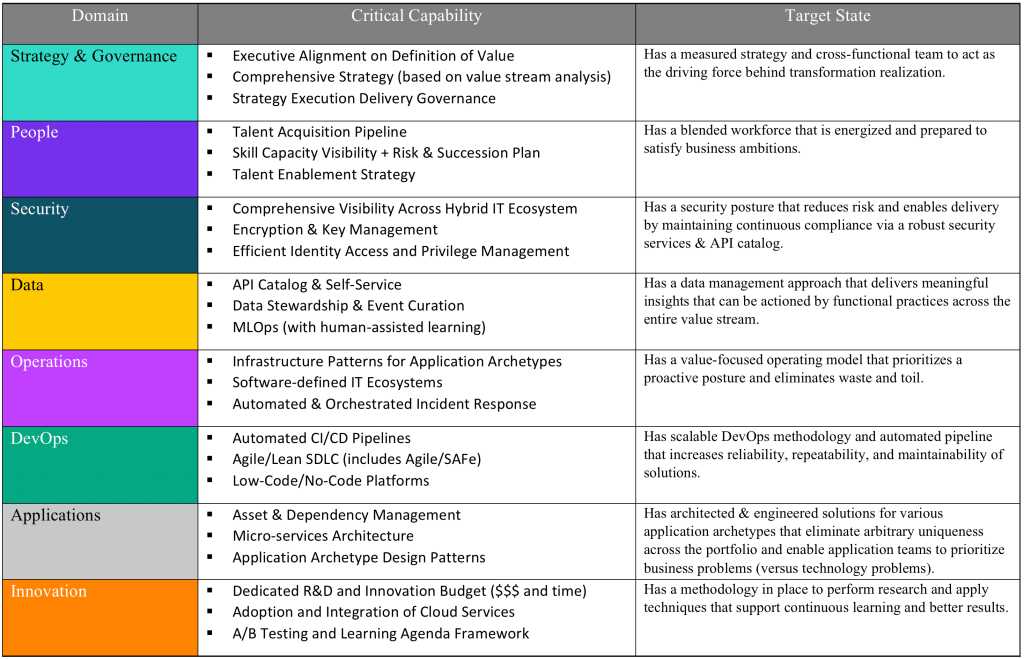- The M4 MacBook Air is my top work laptop in 2025, especially on sale for $850
- The AI video tool behind the most viral social trends right now
- Here's why network infrastructure is vital to maximizing your company's AI adoption
- The iPad Mini is 20% off, making my favorite portable tablet even easier to recommend
- Best Buy is giving away $300 gift cards when you buy a Hisense TV - here's how to qualify
IT Must Meet Digital Ambition

By Steven Fatigante
Can your Information Technology organization keep up with your digital business ambitions? For most organizations, the answer is no – at least not right now. Accelerating time-to-value requires focused effort and priority across the entire operating model. However, with the proper approach and leadership driving change – organizations can achieve more than they ever imagined.
Accelerate time-to-value
Most organizations have similar pain points. It’s even worse for incumbents that have set ways and a depth of technical debt. Long-standing institutions with legacy infrastructures need the same speed, agility, and economics that digital-native competitors enjoy to meet consumer demand and stay competitive in an evolving marketplace. But they also need to maintain control of their apps and data to mitigate risk and comply with regulatory requirements. Adopting a hybrid cloud approach, encompassing a mix of public, private, and edge ecosystems, offers a flexible cloud formation with the best performance, management, control, and resiliency for varied workloads.
Using a planned infrastructure of on-premises equipment, private cloud capabilities, and public cloud providers allows flexibility, but transforming to hybrid cloud–based IT needs more than an understanding of the technology. It requires a cultural shift that spans people and business processes as well as the technology stack. Specialized expertise is needed to transform critical workloads and evolve operations to accelerate and realize the full value of a digital business.
Critical themes for contemporary organizations
As audiences demand the next level of experience, expectations shall be elevated creating a new normal for IT organizations. Here are just a few of the critical themes that will need to be addressed.
- Reliability will dominate strategic objectives congruent to business and operational continuity
- Security assumes the role of enabler, and begins to act like a true engineering group delivering results with a DevOps mentality
- Continuous Compliance needs to be maintained on several levels – regulatory, security, architectural, technical, and financial
- Business Intelligence will soon be table stakes, and will begin to separate the weak from the herd
- Operating Model shall incorporate high performing cross functional teams to address operational continuity & digital ambitions
- Incessant Delivery must be delivered to production targets on a regular basis to attract and retain customers
- User Experience for the workforce must reach parity with experiences encountered outside of an employment setting
- Performance Management will reign paramount, as outstanding performers and change agents driving transformation need to be vigorously rewarded in order to retain talent in a competitive marketplace
An Adoption Framework
Organizations are looking for the “right mix” for their hybrid IT strategy to accelerate, de-risk, and scale innovation & business outcomes. With the HPE Edge-to-Cloud Adoption Framework, HPE is providing organizations with the industry’s most comprehensive set of proven methodologies that identify and develop the critical capabilities needed to achieve an optimal hybrid cloud operating model for their business needs.
Organizations should prioritize these capabilities to establish the foundational building blocks to accelerate time-to-value across their operating model.

In short…
Any transformation, at its core, is more than just IT – it includes people and process too. Why? Because meaningful, sustainable, and effective transformation of any kind requires change in the way organizations—and their people—operate and behave. This is especially true when it comes to digital transformations, which, as a minimum, aim to inject agility into the way an organization works. That requires technical change, of course, but in some ways, that’s the easy part.
To find out more about Digital Next Advisory or engaging with an HPE Digital Advisor please contact us at digitaladvisors@hpe.com or visit www.hpe.com/digitaltransformation
____________________________________
About Steve Fatigante


